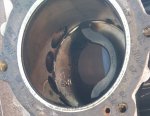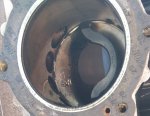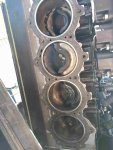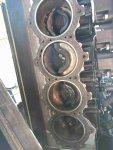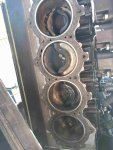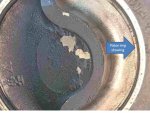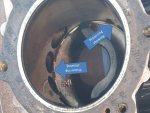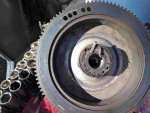ewilderson
Cadet
- Joined
- May 14, 2016
- Messages
- 14
Ok, found myself in a little deeper than I wanted. I recently (March '15) rebuilt my '87 Force 125. Bought an entire rebuild kit from powerhead exchange and had the block machined. Have taken it to the lake about 5 times since then, working out minor problems (primer bulb air leak) until the last trip to the lake, where everything worked well, except for a rough idle.
As we were getting ready to pull the boat onto the trailer at the end of the day, it struggled to idle, and after multiple restarts decided it was dead for the day. We pulled the boat onto the trailer and took it home. Now I am starting to look into what is going on and cannot find the issue (completely).
I now have the boat at home, pulled both carbs and rebuilt. Soaked in cleaner over night, blew out all passages, look brand new. Reinstall on the boat, and try to start it on the hose, and it will just crank, full speed but will not pop or start. I decide to check the compression, and find I have 60-65 psi in all cylinders. I now know what my problem is, and pull the head.
Inspecting the cylinders and everything looks OK (no major wear, the pistons look OK to me), buy a new head gasket, clean both surfaces before mounting and reinstall the head. Spray some WD40 in the spark plug holes and test compression again. I still get ~65psi in every cylinder, and the boat wont start.
I have attached pictures from when I removed the head, maybe someone can tell me that these really dont look OK. All the cylinders look about the same.
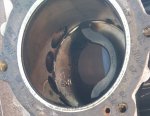
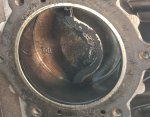
I am lost... I am not really a mechanic by any means, but an engineer by trade. I am not sure where to go next. It seems odd to me that all the cylinders would be low on compression but reading so close to each other. Could anyone point me in the right direction on what could be causing my compression issues?

As we were getting ready to pull the boat onto the trailer at the end of the day, it struggled to idle, and after multiple restarts decided it was dead for the day. We pulled the boat onto the trailer and took it home. Now I am starting to look into what is going on and cannot find the issue (completely).
I now have the boat at home, pulled both carbs and rebuilt. Soaked in cleaner over night, blew out all passages, look brand new. Reinstall on the boat, and try to start it on the hose, and it will just crank, full speed but will not pop or start. I decide to check the compression, and find I have 60-65 psi in all cylinders. I now know what my problem is, and pull the head.
Inspecting the cylinders and everything looks OK (no major wear, the pistons look OK to me), buy a new head gasket, clean both surfaces before mounting and reinstall the head. Spray some WD40 in the spark plug holes and test compression again. I still get ~65psi in every cylinder, and the boat wont start.
I have attached pictures from when I removed the head, maybe someone can tell me that these really dont look OK. All the cylinders look about the same.


I am lost... I am not really a mechanic by any means, but an engineer by trade. I am not sure where to go next. It seems odd to me that all the cylinders would be low on compression but reading so close to each other. Could anyone point me in the right direction on what could be causing my compression issues?





















